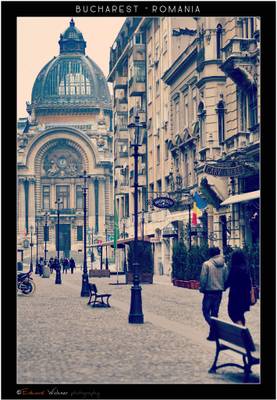
0
Bucharest, Romania

0
Bucharest (Romanian: București) is the capital municipality, cultural, industrial, and financial centre of Romania. It is the largest city in Romania, located in the southeast of the country, at 44°25′57″N 26°06′14″ECoordinates: 44°25′57″N 26°06′14″E, lies on the banks of the Dâmbovița River, less than 70 kilometres (43 mi) north of the Danube. Bucharest was first mentioned in documents in 1459. It became the capital of Romania in 1862 and is the centre of Romanian media, culture and art. Its architecture is a mix of historical (neo-classical), interbellum (Bauhaus and Art Deco), Communist-era and modern. In the period between the two World Wars, the city's elegant architecture and the sophistication of its elite earned Bucharest the nickname of "Little Paris" (Micul Paris). Although buildings and districts in the historic city centre were heavily damaged or destroyed by war, earthquakes, and above all Ceaușescu's program of systematization, many survived. In recent years, the city has been experiencing an economic and cultural boom. Not to be confused with Budapest.